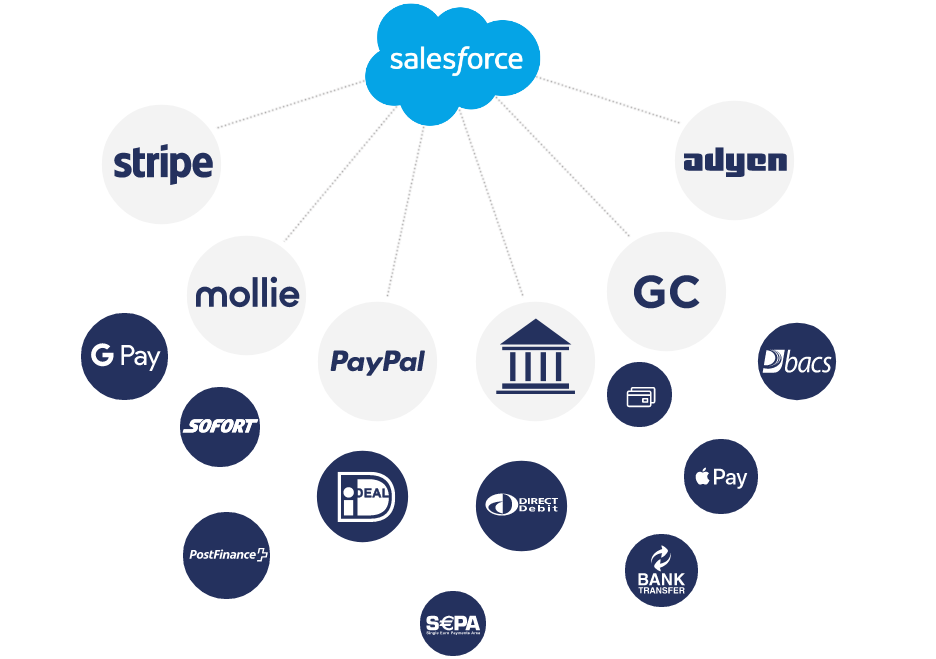Remember the last time you had a really great customer experience? It might not happen all the time, but when it does, you usually remember it – you might even tell a friend about it.
The same is true for donor experiences. Donors value and remember great experiences, especially personalized ones – they help to connect donors to causes and to build more genuine relationships with your organization. They also impact your nonprofit’s ability to raise funds. Accenture found that 55% of donors would give more if they received a more personalized experience; 25% of those would donate up to 25% more and 8% said they would donate up to 50% more.
With that in mind, we’ve put together a few suggestions to help your organization deliver more personalized and improved donor payment experiences in 2022.
1. Listen to donors and build a complete donor profile in CRM:
This might seem obvious, but it’s a crucial first step. To deliver personalized experiences you need to understand your donors. This means ensuring data is accessible within your Salesforce org. Part of this process involves communicating the importance of good data practices to your teams, and another part is making sure you are connecting various systems and data sources to your CRM. Payments are an important data point in building your donor profile – the better you understand your donors’ payment preferences and payment history, the better your teams can be in targeting the right donors with the right donation request on the right channels. You can use Salesforce dashboards to highlight which channels certain types of donors are more likely to respond to, as well as understand which payment methods convert the newest or recurring donors during campaigns. Dashboards offer different teams a focal reference point and make data much more digestible.2. Test new donor payment methods:
When it comes to payments, one size does not fit all. There are lots of methods available and each individual donor will have their preference. Payment trends change all the time too. A 2021 study from Juniper Research found that the number of QR code payment users will exceed 2.2 billion in 2025, up from 1.5 billion in 2020. But, just because something is trending doesn’t mean it’s going to be right for your nonprofit – what’s important is that you are able to test new methods and/or channels and to offer them to your donors if you find that they value them. Can you easily switch on and off payment providers and methods in your CRM today? A good example of the value in testing new payment methods can be seen at UNICEF Switzerland. After some initial testing and support from the FinDock Customer Success and Product team, UNICEF made Twint, a relatively new payment method, available for donors. After less than a year, Twint has become UNICEF Switzerland’s second most popular payment choice for online donations.
3. Make payments more personalized:
When payment data becomes CRM data (actionable in the Salesforce donor profile) you can start to deliver much more personalized and relevant donor experiences. Some examples of personalizing donor payment engagement include sending an automated thank you email or text from Salesforce Marketing Cloud for Nonprofits after a donor has donated, or using a dynamic email with one-click payment option based on donors’ previously stored payment information. Having access to donor payment information can also give your fundraising teams much more confidence. Annik Wierenga, Project Manager at Juconi shares: “We have full visibility of our donor’s giving history, which means we feel more confident that we’re asking the right donors for the right amount.” Personalized payment experiences also mean more successful payments. Jeroen Beelen, Data and Marketing Automation Manager at Save the Children Netherlands explains: “If something happens with a Direct Debit, we can start a journey with a donor – informing them that the Direct Debit has failed and requesting if we can get in touch. Oftentimes, a mistake can be easily rectified. All these instances make an impact on our fundraising income so having this control is really important for our team.”While this is by no means an exhaustive list, it’s a great starting point. If you focus on three core areas there’s a lot to be gained. Use these three pillars as guideposts for your teams to build on into the future.
If there’s one thing we’ve learned in the last few years it’s that we need to be able to respond to change. Organizations that listen, understand, and also anticipate changes, will ultimately come out on top. But it’s not just about adaptability, rather, being prepared to adapt. “The truth is that once you find yourself in a position where you need to adapt, it’s usually too late (Greg Satell for HBR, 2016).”
Are you prepared to delight donors with personalized payment experiences in 2022?
Join us on Thursday 10th Feb at 9.30am GMT/10.30am CET for a live webinar to learn how to take actionable steps to drive better donor experiences with payment data in Salesforce.

Bas Visser
CEO & Founder
Bas Visser is Founder & CEO of FinDock. He and his team are passionate about making Salesforce CRM accessible for nonprofits of any size and optimizing the donation payment process. To stay relevant in a fast changing consumer world, Bas believes that every organisation should build a Customer Payment Management strategy.
